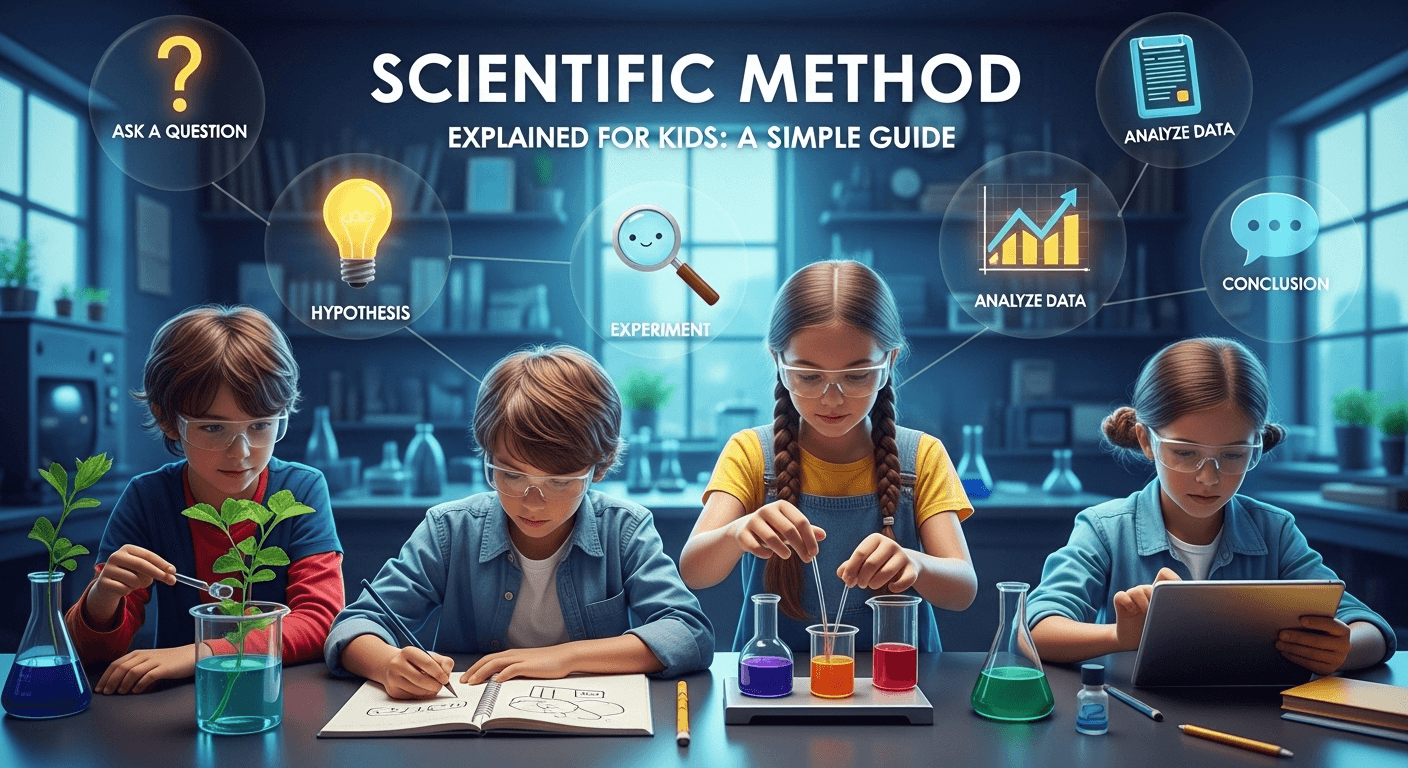Are you ready to become a super-sleuth of the universe? Imagine you're a detective, and the world is full of amazing mysteries waiting to be solved. How do you figure out why a rainbow appears after it rains, or why your ice cream melts in the sun? You don't just guess; you follow a special set of steps, like a secret code for discovering the truth. This secret code is what scientists use every single day, and it's called the scientific method. So, what is the scientific method explained for kids? Think of it as a super-detective's toolkit that helps you ask questions, find clues, and solve puzzles about how everything works. It’s a powerful and fun way to explore the world, and the best part is, anyone can use it—including you! What is the Scientific Method, Anyway? Before we dive into the secret steps, let's understand what the scientific method really is. Imagine you want to bake the most delicious cookies ever. You wouldn't just throw random ingredients into a bowl and hope for the best, right? You'd follow a recipe. The scientific method is like a recipe for discovery. It’s a structured, step-by-step process that helps us ask important questions and find reliable answers in a way that is fair and makes sense. It's the main tool scientists, inventors, and curious people everywhere use to learn about the world, from the tiniest atoms to the biggest galaxies. The main goal of the scientific method is to make sure our answers are based on evidence, not just feelings or opinions. It’s a way to test our ideas to see if they're correct. For example, if your friend says that talking to plants helps them grow, the scientific method gives you a way to a-c-t-u-a-l-l-y test that idea instead of just agreeing or disagreeing. This process ensures that when a scientist shares a new discovery, other scientists can repeat the same experiment to see if they get the same results. This is what makes science so reliable and trustworthy. It's also important to know that the scientific method isn't a strict, straight line you can never stray from. Think of it more like a cycle or a loop. Sometimes, a discovery during an experiment might lead you to ask a brand new question, or you might realize your first guess (your hypothesis) was wrong. That’s not a failure! It's actually a key part of the process. Failing and trying again is how we learn. You might have to go back a step or two, adjust your plan, and start over. Every step, even the ones that don't go as planned, gives you valuable information on your quest for answers. The 6 Super Steps of the Scientific Method Ready to put on your lab coat and grab your magnifying glass? The scientific method is most often broken down into six main steps. While some scientists might describe them a little differently, these six steps cover the entire journey from a simple question to an amazing discovery. To make it easy to remember, we're going to follow a single example all the way through: let's pretend we want to figure out which paper airplane design flies the farthest. This is a classic, fun experiment you can easily do yourself. Following these steps in order helps you stay organized and ensures your experiment is a "fair test." A fair test is crucial because it means you are only changing one thing at a time. This way, you can be sure that the one thing you changed is what caused your results. For our paper airplane experiment, the one thing we will change is the design of the airplane. We will keep everything else—like the type of paper, the person throwing it, and the starting point—exactly the same. Let's walk through the six super steps one by one. Think of them as levels in a video game that you complete to reach the final boss: The Conclusion! Each step is an important part of your scientific adventure. Ask a Question (The Great Observation) Every great scientific discovery starts with a simple word: "Why?" or "What if?" This first step is all about being curious and observant. You notice something in the world around you and it sparks a question in your mind. Maybe you see ants marching in a line and wonder where they're going. Maybe you drop a spoon and a feather and notice the spoon hits the ground first. These observations are the seeds of science. For our experiment, your observation might be that you've seen different paper airplanes at school, and some seem to glide a-c-r-o-s-s the room while others nosedive straight to the floor. This observation leads you to a testable question. A good scientific question is one you can answer with an experiment. A question like "Are paper airplanes cool?" isn't very scientific because "cool" means different things to different people. A better question is: "Which paper airplane design—a long and narrow jet or a wide-winged glider—will fly the farthest distance?" Form a Hypothesis (Your Smart Guess) Once you have your question, it's time to make a smart guess about the answer. In science, this smart guess is called a hypothesis. A hypothesis isn't just a wild guess; it's an educated guess based on what you already know or what you've observed. A great way to phrase your hypothesis is using an "If…, then…" statement. This format clearly states what you think will happen as a result of your experiment. A good hypothesis must be testable—meaning you can do an experiment to see if it's true or false. Based on our question, let's form a hypothesis. Maybe you've noticed that real airplanes with wide wings seem to float in the air for a long time. So, you might predict the same will be true for paper airplanes. Your hypothesis could be: "If I build a wide-winged glider and a long, narrow jet, then the wide-winged glider will fly





